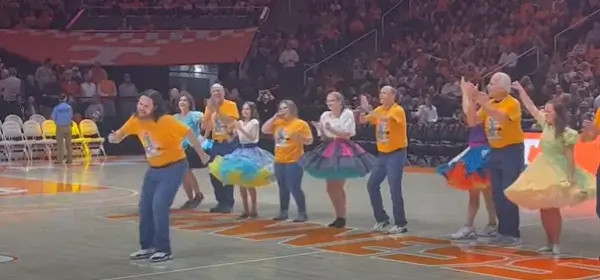
For generations, the mountains of North Carolina have echoed with the sounds of feet tapping to the rhythms of old-time and bluegrass music. Dance here is not just an art form; it’s a communal thread that weaves through the fabric of life, marking celebrations, seasons, and significant life events. The origins of these mountain dances – clogging, flatfoot dancing, and square dancing – are as diverse as the origins of the mountain music they accompany. Each form has its own unique story, deeply rooted in the cultural melting pot of Appalachia.
Fun Fact
Sam Queen, from Waynesville, NC, started the Soco Gap Cloggers, a traditional-based square dance team, in Haywood County, NC, some time in the late 1920s. They went on to perform and win the first square dance competition at the Mountain Dance and Folk Festival in Asheville, NC in 1928. In 1938, when the King and Queen of England made their first visit to America, and Franklin D. Rossevelt was president, the Soco Gap Cloggers went to the White House to perform for them, as well as other dignitaries.
The J Creek Cloggers Style
At the core of J Creek Cloggers’ performances is a blend of these diverse dance styles. They have mastered the art of incorporating elements of clogging, square dancing, and flatfoot dancing, creating a performance that is as varied as it is unified. Each dancer brings their unique flair, whether it’s the rhythmic precision of buck dancing or the fluid spontaneity of flatfoot dancing, all while maintaining the cohesive beat that defines their group’s signature style.

